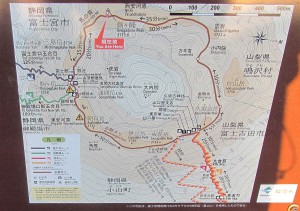Jul 10, 2015 Comments Off on Shonan Seminar 052 Talk Abstracts
Shonan Seminar 052 Talk Abstracts
Engineering Adaptive Software Systems: A Research Agenda
John Mylopoulos,?University?of Trento, Italy and University of Toronto, Canada
Abstract?? Adaptive software systems need to be capable of multiple behaviours for fulfilling their requirements, so that if one behaviour is failing for whatever reasons, the system can switch (“reconfigure”) to an alternative behaviour. The most important question then in engineering such systems is: how do we design and implement systems that are capable of fulfilling their requirements in multiple ways? What are the concepts in terms of which such systems are conceived, designed and implemented? What techniques do we use to analyze and design them? What are the adaptation mechanisms through which an adaptive system monitors its behaviour, determines root causes for failing requirements and selects a suitable adaptation?
How to Capture Context and Context-dependent Behavior
Tetsuo Tamai, Hosei University, Japan
Adaptation and Boundaries
Bashar Nuseibeh,?Lero and The Open University, UK
Integrated Control and Systems Science for Cyber-Physical Systems: A Research Agenda
Hausi A.?Müller, University of Victoria, Canada?
The Aftermath of Mystery Flight MH370: What Can Adaptive Software Engineers Do?
Yijun Yu,?The Open University, UK
Dynamic Software Evolution – Approaches and Issues
Shinichi Honiden, National Institute of Informatics and The
University of Tokyo, Japan
Discrete Time Adaptive Linear Control for Software Systems
Martina Maggio, Lund University, Sweden
Assured?Graceful?Degradation with Discrete Controller Synthesis
Kenji Tei, NII, Japan
Software Self-Adaptivity Measurement based on Requirements Models
Zhi Jin, Peking University, China
Contexts and Unit of Adaptation in Context-oriented Programming
Hidehiko Masuhara, Tokyo Institute of Technology, Japan
Dynamic Software Composition for Run-time System Evolution
Robert Hirschfeld, Hasso Plattner Institute at the University of Potsdam, Germany
Abstract?? Collaborative security exploits the capabilities of the components available in the ubiquitous computing environment in order to protect assets from intentional harm.?By dynamically composing the capabilities of multiple components, collaborative security implements the security controls by which requirements are satisfied.?However, this dynamic composition is often hampered by the heterogeneity of the components available in the environment and the diversity of their behaviours.
Evolving Dynamic Software Product Lines
Clément Quinton, Politecnico di Milano, Italy
Guaranteeing Solution Quality for SAS Optimization Problems by Being Greedy
Ulrike Stege, University of Victoria, Canada
Bidirectional Programming for Self-adaptive Systems
Lionel Montrieux, NII, Japan
takes a source as well as an updated view, and reflects the changes made
to the view into the source. Bidirectional?programming uses?Domain-Specific Languages (DSLs) to facilitate writing bidirectional?transformations, while ensuring that the transformations satisfy some?important properties.
High Variability Models for Better Adaptive Systems
Kostas Angelopoulos,?University?of Trento, Italy
Next Generation Collaborative Distributed Visualization Systems on the Distributed Cloud
Rick?McGeer, SAP,?San Francisco, USA
Towards Effective Management of Dynamic Software Evolution
Yasuyuki Tahara, The University of Electro-Communications,
? ? ? ? ?Japan
Abstract?? Recently, there are arising several?research topics dealing?with dynamic software evolution, such as self-* systems, including?self-adaptive ones, autonomic computing, models at run time, and?requirements at run time. Because the behaviors of dynamically?evolving software tend to become complicated, it is more difficult to?manage those behaviors effectively than conventional software. In my?talk, I will examine various existing approaches, including formal?verification, to management of dynamic software evolution and their?problems, and will suggest some research directions to solve the?problems.
An Adaptive Framework for Individual Privacy
Nobukazu Yoshioka, NII, Japan
Abstract?? Privacy is a right of users to control their private?information. In?other words, users can decide to reveal their private information to?others.? Services with users’ private information should be provided?with respect to privacy.? Some frameworks to preserve the right have?been proposed.? It, however, still hard for developers to meet users’?privacy preferences and develop a privacy friendly service.
In my talk, we propose a new framework?to address these problems.? The?framework allows users to choose their privacy preferences from the?viewpoints of both the privacy risk and the value of services.? In?addition, developers can design the behavior with the variation of a?service, so that the development costs are reduced.? Furthermore, our?framework can adapt to the changes of a preference automatically.? We?illustrate the effectiveness with a case study of an exercise service.
Context-Oriented Programming for Adaptive Software Systems
Tetsuo Kamina, Ritsumeikan University, Japan
Modularity for Uncertainties in Adaptive Software SystemsNaoyasu Ubayashi, Kyushu University, Japan
Abstract ??Embracing uncertainties in software evolution is one of the crucial?research topics in engineering?adaptive software systems. As the?research on uncertainty is so young, there are many issues to be?tackled. Modularity for uncertainties is one of them. If uncertainties?can be dealt with modularly, we can add or delete uncertain concerns?to/from a software system whenever these concerns arise or are fixed?to certain concerns. To deal with this challenging issue, we propose a?modularization mechanism for uncertainties. Agile methods embrace?changes to accept changeable user requirements. On the other hand, our?approach embraces uncertainties to support exploratory software?evolution.











